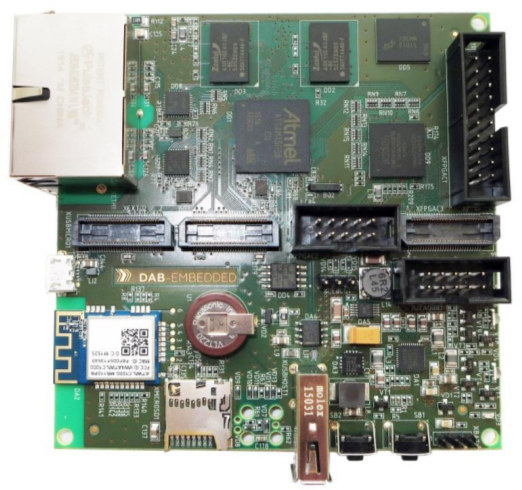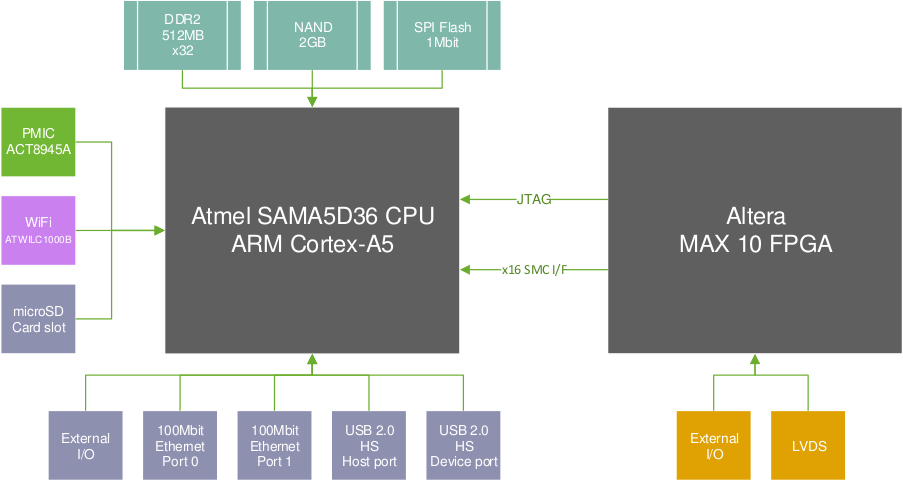DAB Embedded, a Belgian engineering company specialized in research and development of electronic products, has designed DAB-OWT-SAM5 router board powered by Atmel SAMA5D36 Cortex-A5 processor and Altera MAX 10 FPGA, which runs OpenWrt or Windows Embedded Compact 7, and targets IoT applications.

DAB-OWT-SAM5 board specifications:
- SoC – Atmel SAMA5D36 ARM Cortex-A5 processor @ 536MHz with Floating-Point Unit.
- FPGA – Altera MAX 10 FPGA with integrated ADC (Exact part number not disclosed)
- System Memory – Up to 512MB DDR2
- Storage – Up to 2GB NAND flash, 1Mbit SPI flash, micro SD slot
- Connectivity – 2x Fast Ethernet ports, 802.11 b/g/n WiFi (Direct, station mode, and soft-AP) via Atmel ATWILC1000B module
- Display Interface – LVDS connected to FPGA
- USB – 1x USB 2.0 host, 1x USB 2.0 device
- Expansion Connectors
- Wired interfaces – RS232, CAN 2.0 A/B, KNX, RS-485/422, etc…
- Wireless connectivity – Zigbee, Z-Wave, KNX RF, etc…
- Power Supply – 5V DC power supply, external Li+ battery
- Dimensions – N/A

The company can provide OpenWrt firmware with Linux 4.1 BSP, and/or Windows Embedded Compact 7, and NIOS II examples for the FPGA.
DAB Embedded did not release availability nor pricing information. A few more details may be available on DAB-OWT-SAM5 product page.

Jean-Luc started CNX Software in 2010 as a part-time endeavor, before quitting his job as a software engineering manager, and starting to write daily news, and reviews full time later in 2011.
Support CNX Software! Donate via cryptocurrencies, become a Patron on Patreon, or purchase goods on Amazon or Aliexpress




